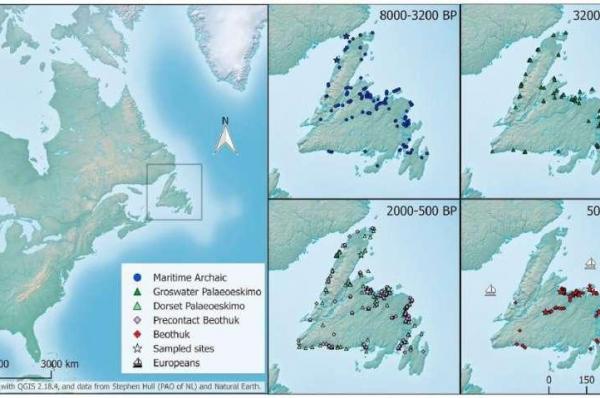
Oct. 15 (UPI) — According to genetic analysis, Newfoundland, the northeastern Canadian island, was populated by three distinct groups — in three different waves — over the last 10,000 years.
When scientists analyzed the DNA of two known cultural groups, the Maritime Archaic and Beothuk, they found the groups brought unique matrilines to the island.
Until now, archaeologists thought the Beothuk were direct descendants of the Maritime Archaic, but the latest findings — detailed this week in the journal Current Biology — suggest the two groups had complicated histories.
“Our paper suggests, based purely on mitochondrial DNA, that the Maritime Archaic were not the direct ancestors of the Beothuk and that the two groups did not share a very recent common ancestor,” Ana Duggan, a researcher at McMaster University, said in a news release. “This in turn implies that the island of Newfoundland was populated multiple times by distinct groups.”
Duggan and her colleague Hendrik Poinar used DNA samples from the remains of 74 members of the two groups to plot the mitochondrial genome diversity of the Maritime Archaic and Beothuk. They supplemented their analysis with evidence from the archaeological record, as well as dietary isotope profiles.
The Beothuk samples, mostly teeth and and tiny bone fragments, were recovered from Notre Dame Bay archaeological sites, where the Beothuk people retreated from encroaching European settlers. Most of the samples were less than 300 years old.
The much older Maritime Archaic samples were sourced from remains recovered from the L’Anse Amour burial mound. Some of the remains found at the site are more than 7,700 years old.
While the two groups aren’t entirely unrelated, the latest evidence suggests a shared maternal lineage from the much more distant past, not the recent past.
“These data clearly suggest that the Maritime Archaic people are not the direct maternal ancestors of the Beothuk and thus that the population history of the island involves multiple independent arrivals by indigenous peoples followed by habitation for many generations,” the researchers explained in their newly published paper. “This shows the extremely rich population dynamics of early peoples on the furthest northeastern edge of the continent.”





